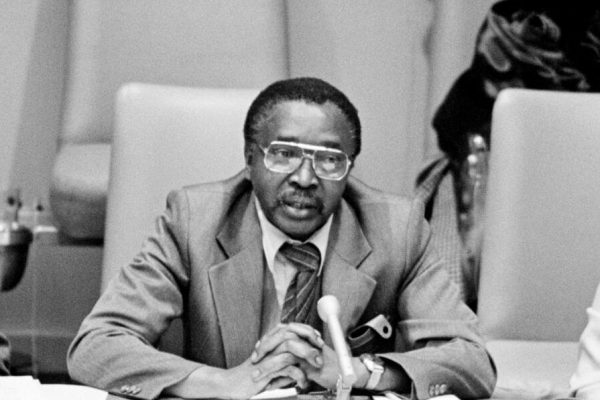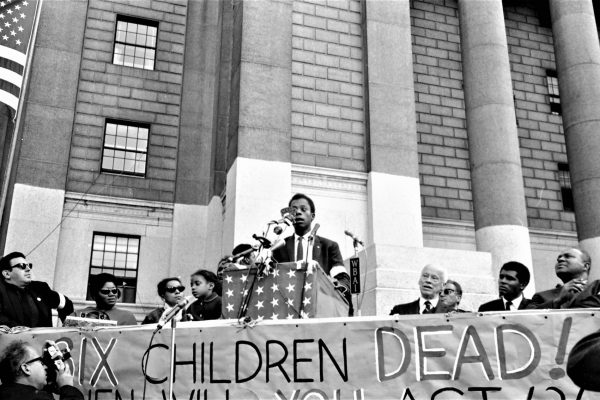Racial capitalism, this forum has shown, is a powerful analytical tool. It provides a framework robust enough to account for the racial logic of the opioid crisis, the Trump-era War on Drugs, and the country’s punitive turn. The responses to my essay expand its reach even further, offering multiple points of departure for enriching the narrative. Our conversation highlights the power of integrating public health scholarship and activism with writings on mass incarceration and the drug war. It was not until I attempted to suture together different threads of this story, drawing on both schools of thought, that I saw how much the narrative arc of drug prohibition changes in light of the recent history of Big Pharma.
The core paradox of the opioid crisis is how extreme criminalization of a racialized, illicit drug economy underwrote and enabled the larger project of licit drug deregulation. The United States is simultaneously the largest incarcerator of people convicted of using and selling drugs and the largest consumer of legal (and illegal) narcotics in the developed world, by far. Although Americans make up only 5 percent of the world’s population, they consume over 80 percent of the world’s opioids. Public policy has enabled the steady growth of pharmaceutical consumption as multiple iterations of the drug war raged on. And of course, as in all aspects of U.S. society, race functions as the structuring principle, in this case dividing the aboveground and netherworld of drug business. As Britt Rusert notes in her response, “We continue to live in a world made by Reagan, one where corporate empowerment both benefits from and reinforces racial regimes of punishment.”
Not content to limit our analysis of racial capitalism to the contemporary United States, Max Mishler demonstrates that the creative destruction of family-owned drug “cartels” is far from new. Drawing explicitly on black Marxist thinker Eric Williams and implicitly on Alfred McCoy’s The Politics of Heroin in Southeast Asia (1972), Mishler offers a compelling counter-history that places the opioid crisis in a longue durée history of imperialism. He emphasizes the protean and flexible nature of racial capitalism, which “bracketed” white drug addiction while escalating “concern about racialized laboring populations” in the United States. Emphasizing the links between expanding markets, imperial violence, and psychoactive substances—whether opium, alcohol, tobacco, cocaine, or sugar—remains a uniquely compelling way to teach the global history of racial capitalism. One of the truisms of U.S. drug histories is that every major foreign war of the past century produced a domestic drug crisis. Mishler’s analysis helps to explain why.
Although the historiography is slowly expanding, racial capitalism has not found wide currency among carceral historians until quite recently with the exciting new work of LaShawn Harris, Max Felker-Kantor, Jackie Wang, and Simon Balto, among others. Geographer Ruth Wilson Gilmore’s pathbreaking Marxist analysis Golden Gulag (2007) is an important influence, exploring surplus land, labor, and capital as the driving forces behind California’s postwar prison boom.
Nevertheless, in contrast to the public’s fascination with private prisons, many historians view hyper-incarceration as a political project at its core. While certain aspects of the contemporary carceral state can be parsed as revenue-generating state action—including bail, immigrant detention, Ferguson-style municipal fines and fees, and civil asset forfeiture—the carceral project is an expensive one whose primary yield has been greater control over nonwhite populations and accrual of political capital in the years after the 1965 Voting Rights Act. Investigative journalist Dan Baum’s notorious interview with John Erhlichman succinctly encapsulates this view. “The Nixon campaign in 1968, and the Nixon White House after that, had two enemies: the antiwar left and black people,” explained the Watergate coconspirator in 1994. “We knew we couldn’t make it illegal to be either against the war or black, but by getting the public to associate the hippies with marijuana and blacks with heroin, and then criminalizing both heavily, we could disrupt those communities. We could arrest their leaders, raid their homes, break up their meetings, and vilify them night after night on the evening news. Did we know we were lying about the drugs? Of course we did.
This is an issue not only of the past, but of the eternal present. On the eve of Jair Bolsonaro’s election in Brazil this past October and Trump’s multiple meetings with Philippine president Rodrigo Duterte, the punitive language of the drug war has once again been deployed in service of right-wing authoritarianism. As Dawn Paley’s work on “drug war capitalism” clearly demonstrates, the Wars on Drugs and Gangs are protean abstractions that never reduced consumption of illicit substances. They did, however, enable a portfolio of revanchist policies around the globe—from police killings in Brazilian favelas to land grabs in Colombia, summary executions in the Philippines and the warehousing and economic divestment of vulnerable populations throughout the West. To explain how this happened, Michael Collins reminds us that the United States globalized the War on Drugs by “imposing U.S. policies and practices” throughout the developing world.
Bringing our attention back to the domestic sphere, Julilly Kohler-Hausmann highlights how the drug war spawned a governing rationale not only for the Trump administration, but also for his Democratic and Republican predecessors. From the 1970s forward, “getting tough” became the “answer to most problems,” from disciplining poor women on state assistance to trade deficits. Kohler argues that at its core, the War on Drugs and its predilection for toughness hinged on a “gender hierarchy” privileging traditionally masculinist institutions of the state, including police, military, and prisons. This analysis is critical, and Kohler-Hausmann’s work on Nelson Rockefeller’s “Attila the Hun laws” demonstrates the urgency of integrating racial and gender analysis to understand the punitive turn.
Jonathan Kahn, by contrast, sees the Trump presidency and drug war as the culmination of Republican dominance in the recent past. As a result, the tension between drug deregulation of legal markets and the criminalization of illicit trade is understood not as paradox, but as GOP racial scapegoating. However, this premise contradicts much of what we know about the War on Crime, which scholars Naomi Murakawa and Elizabeth Hinton have revealed as a bipartisan project from its very inception in President Lyndon Johnson’s administration. Here it is useful to recall one of the most absurd moments in the Trump presidency, when he threatened in a speech before the United Nations to introduce legislation sentencing drug dealers to death. In his rush to “get tough,” Trump remained blissfully unaware that the powers to do so at the federal level had already been granted by Democratic president Bill Clinton in his 1994 crime bill. This irony highlights why we need a searching moral inventory of the overlapping Wars on Drugs, Gangs, and Crime that is critical of the Trump presidency’s virulent racism, but does not see it as exceptional. Trump’s administration cannot be understood apart from a deeper history of how the two-party system nurtured the racial animus of mass incarceration across party lines.
Understanding our history is nowhere more urgent than in the upcoming primary race for the 2020 presidential election. Thanks to Black Lives Matter and other radical activists, the last presidential election saw a robust critique of the Clintons’ participation in the incarceration frenzy. That same critique has now been trained on Kamala Harris’s record as California’s attorney general. But it is crucial that we also openly debate Joe Biden’s pivotal role in mass incarceration and the drug war. Many today see him as an heir to Barack Obama, but he bragged in the 1990s that, in hindsight, the Republican Party resembled Abbie Hoffman and the Democratic Party J. Edgar Hoover in matters of tough crime control. To this end, Biden fought tirelessly for expansion of the death penalty and increased mandatory minimums and civil forfeiture. He helped create the kinds of policies that Trump, Jeff Sessions, and William Barr have so cynically used to their advantage. Just as we hold Harris accountable for her comments on incarcerating the parents of truants, so too should we scrutinize Biden and other Democrats’ culpability in mass criminalization.
It is impossible to write about the opioid crisis and the War on Drugs without looking forward to solutions. Michael Collins’s emphasis on moving away from unregulated, pharmaceutical-driven drug treatment and failed criminal justice reform policies such as drug courts points toward new types of activism. Similarly, L.A. Kauffman’s beautifully written firsthand account of P.A.I.N’s Guggenheim protest against the Sacklers’ patronage reminds us that collective action is our most powerful tool for dismantling our prison nation and for holding corporations such as Purdue Pharma accountable.
Finally, Helena Hansen, Julie Netherland, and David Herzberg, whose transformative work helped inspire my essay, chart the opioid epidemic’s change over time. As is clearly evident in New York, overdose rates among African Americans are rising precipitously, and a singular focus on white suffering occludes the full range of public health effects. Equally important is their analysis of buprenorphine and other forms of medication-assisted treatment (MAT). They demonstrate how pharmaceutical regimes of racial capitalism shape both drug use and treatment, thereby deepening underlying race and class disparities. For this reason, technological fixes rooted in the same industry that spawned the opioid crisis will never provide the antidote. Only a broad-based, anti-racist campaign that diverts resources from punishment and corporate subsidy to public health can move us, in the words of Kauffman, from absolution to accountability.








